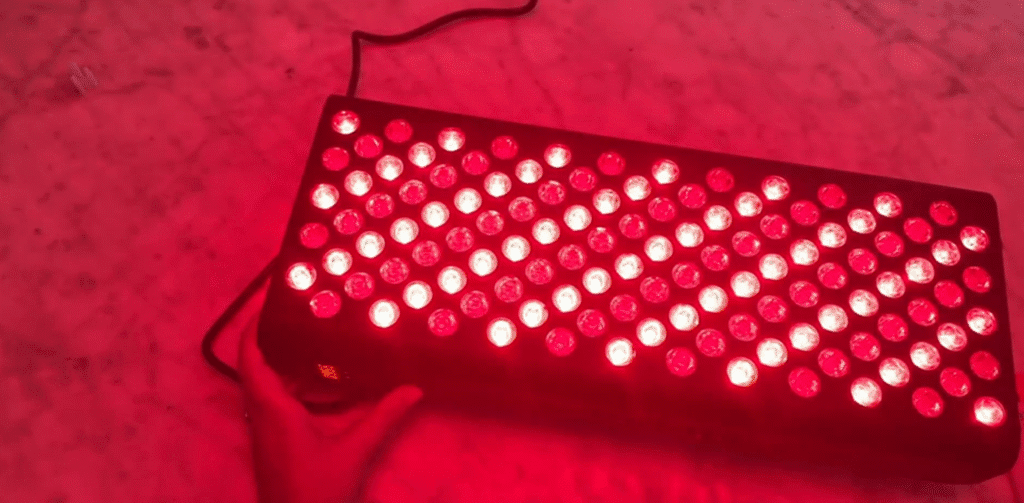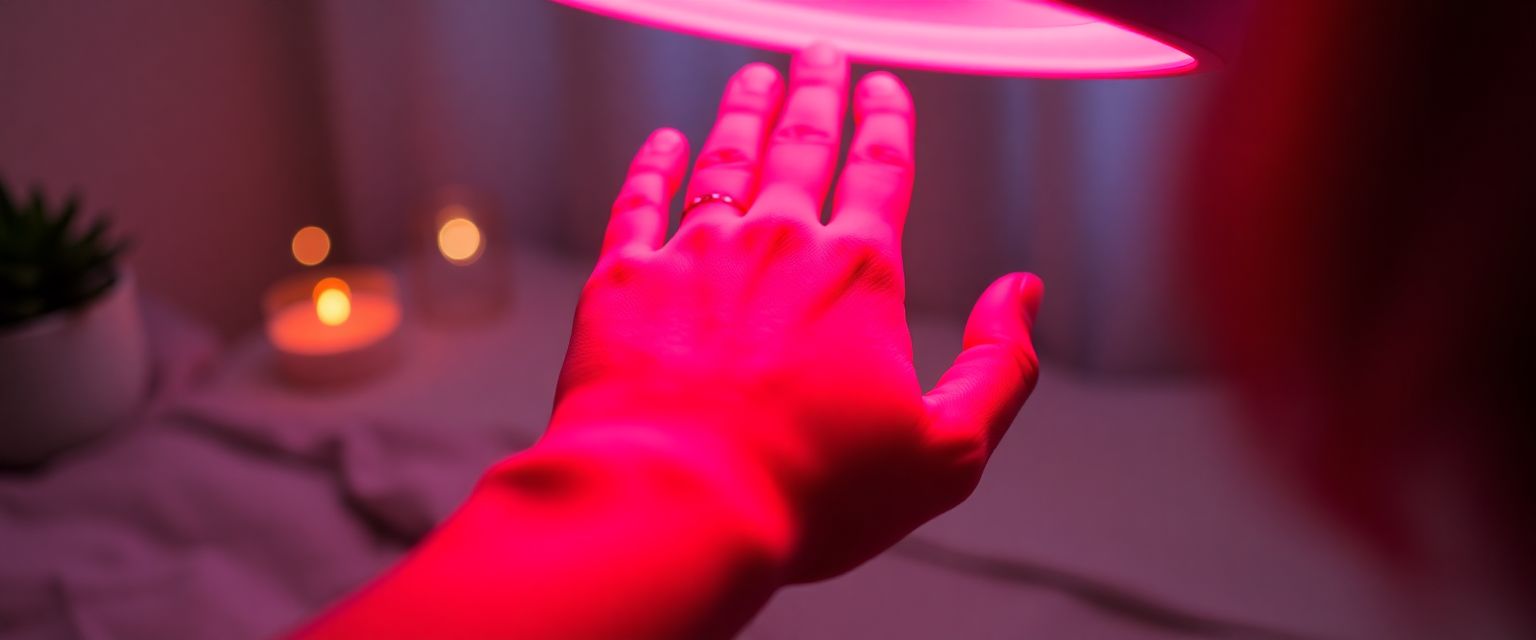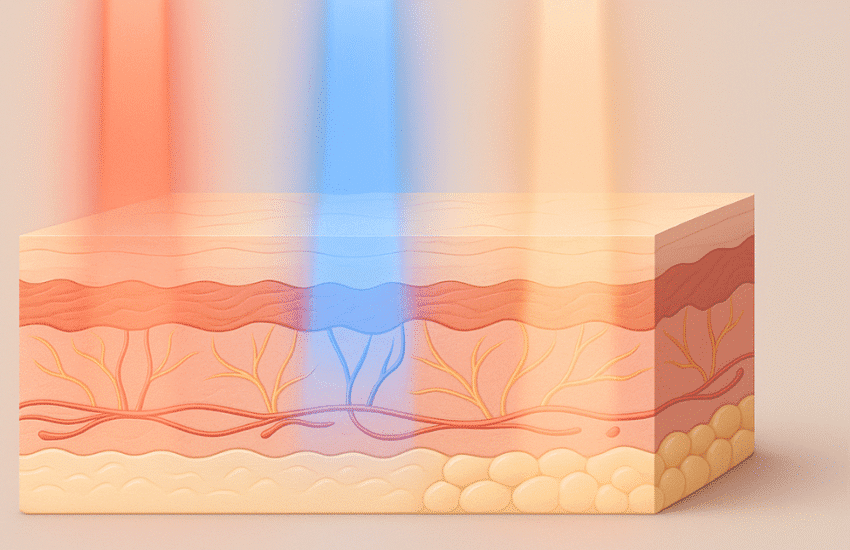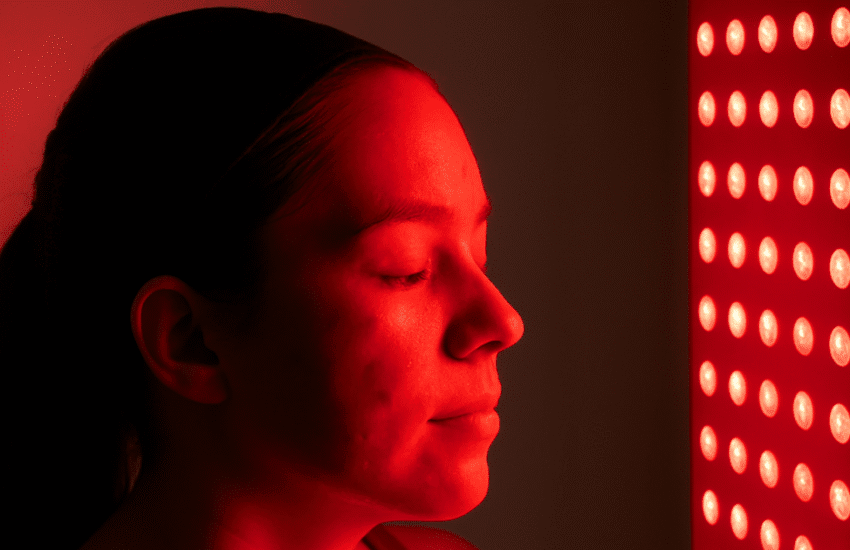Red Light Therapy for Eczema at Home: What You Need to Know
Living with eczema often feels like a cycle of trial and error—itchy flare-ups, temporary relief, and endless products that don’t quite deliver. Light-based therapy is gaining attention as a gentle, at-home option for those looking beyond creams and prescriptions.
In this guide, I’ll break down how using red light for eczema at home works, what to expect, and how to choose a device that fits your needs. While it’s not a cure, this approach is being explored for its potential to support the skin’s natural repair process—without adding another cream to the mix.
Disclosure: As an Amazon Associate I may earn a small commission on qualifying purchases
What Is Red Light Therapy and How Does It Work for Eczema?
Red light therapy uses specific wavelengths—typically between 630–670nm—that can reach beneath the skin’s surface. Early research suggests this type of light may help support natural skin repair by influencing inflammation, circulation, and cellular energy production.
At the cellular level, red light is absorbed by mitochondria, where it may increase ATP (energy) production and affect inflammatory signaling. These effects are being explored in various skin conditions, including those with a compromised skin barrier like eczema.
While large clinical trials on eczema specifically are limited, the biological mechanisms behind red light therapy—such as improved tissue repair and reduced inflammatory markers—are well-documented in broader dermatology and wound healing studies.
So while it’s not a replacement for established eczema treatments, some people are exploring red light therapy as a complementary tool in their routine. The key is understanding how it works, what it can realistically offer, and choosing a quality device that delivers the correct wavelengths and power output.
Considering Red Light Therapy for Eczema at Home
At-home red light therapy devices are becoming a popular option for those looking to support their skin naturally between flare-ups or alongside their usual routine. They offer flexibility, especially for people managing chronic skin irritation who want something they can use consistently at home.
Research into red light therapy shows potential anti-inflammatory and skin-repair effects at the cellular level. While it’s not yet a widely recommended treatment for eczema, ongoing studies are exploring how these mechanisms might support skin barrier health over time.
For many, the appeal lies in trying a non-invasive, low-effort option that may complement their current care. Though red light devices aren’t FDA-cleared specifically for eczema, some users report positive experiences when incorporating them into a broader skin management plan.
If you’re thinking about trying red light therapy yourself, choosing the right device is key—especially with so many options on the market.
Choosing the Right Red Light Therapy Device for Home Use
Shopping for LED red light panels for skin conditions can feel like navigating a maze of specs and claims.
Let me break down what actually matters.
- Wavelengths: Look for devices in the 630–670nm range (red light) and ideally 830–850nm (near-infrared). These are the most studied wavelengths for skin and tissue support.
- Power density: This is key. You’ll want at least 30mW/cm² at the recommended treatment distance. Anything less, and you may not be getting the therapeutic benefit—just a warm glow.
For targeted treatment, a handheld red light device is ideal for smaller areas like the inner elbows, behind the knees, or facial patches.
A solid entry-level option is the Lifepro Handheld Red Light Therapy Device, which delivers both red and near-infrared wavelengths in a compact, easy-to-use format.
If you’re treating more widespread eczema—across your back, arms, or legs—a panel-style device will save time and ensure more consistent coverage.
In that case, a model like the Lifepro BioHeal Plus Red Light Therapy Panel can be a smart investment.

The Lifepro Red Light Therapy Panel delivers both red and near-infrared wavelengths, offers full-body coverage, and is FDA-cleared for general wellness use. It’s well-reviewed and more affordable than clinical-grade models.
Budget-friendly red light options ($100-300) work well for small areas but may require longer sessions. Higher-end panels ($500+) offer more power and broader coverage.
Whatever you choose, check for FDA clearance and safety certifications. These details help ensure the device meets quality and safety standards, especially for sensitive skin.
How to Use Red Light Therapy for Eczema: Step-by-Step Guide
Getting started with your red light therapy session duration is simpler than you might think.
- Position yourself 6-12 inches from your device (check your manual—each model varies slightly).
- Start with just 3-5 minutes per area, especially if you’re new to it.
- Gradually work up to 10-15 minutes as you see how your skin responds.
For active flares, daily sessions tends to be more effective. Once things calm down, 3-4 times weekly can help maintain progress.
Make sure your skin is clean and dry—no creams or products that could block the light. A quick photo log can help you track subtle changes over time and understand what’s working best.
Combining Red Light with Other Eczema Management Strategies
Red light therapy may work best as part of a broader skincare routine. For example, using moisturizer after your session (not before) helps avoid blocking the light’s penetration.
Some find it useful to use red light in the morning and apply medicated creams at night. Separating treatments can reduce interference and make it easier to see what’s helping.
It’s also important to continue managing known eczema triggers—whether that’s certain fabrics, foods, or stress. Nutritional support (like omega-3s or vitamin D) may also complement your efforts.
Always check in with your healthcare provider with any concerns.
Safety Considerations and Potential Side Effects
Red light therapy is generally well tolerated, but a few precautions are worth noting.
If you’re pregnant, taking photosensitizing medications, or have light-sensitive skin conditions, speak with a healthcare provider first.
During use, mild warmth is normal (a bit like sunshine). But if you experience redness or irritation, shorten your session or increase the distance. Always wear the safety goggles provided to protect your eyes.
Stick to recommended times—treating the same area repeatedly won’t speed results and may do more harm than good. Consistency and moderation matter more than intensity.
Conclusion
Red light therapy offers a promising, non-invasive way to reduce inflammation, calm itching, and support your skin’s natural healing—especially when used consistently.
If you’re just starting out, the Lifepro Handheld Device can be a practical tool for spot treatment. For broader coverage and faster sessions, the Lifepro Red Light Therapy Panel provides excellent value with the right wavelengths and intensity to support deeper healing at home.
As with any treatment, consistency is key. Pair it with a supportive skincare routine, watch for triggers, and track your results over time. Relief may not happen overnight—but many people find this therapy to be a skin-calming game changer.
References
- Hamblin, M. R. (2018). Mechanisms and Mitochondrial Redox Signaling in Photobiomodulation. Photochemistry and Photobiology, 94(2), 199-212. PMC5844808. https://pmc.ncbi.nlm.nih.gov/articles/PMC5844808/
- Hamblin, M. R. (2017). Proposed Mechanisms of Photobiomodulation or Low-Level Light Therapy. IEEE Journal of Selected Topics in Quantum Electronics, 23(3), 7000417. PMC5215870. https://pmc.ncbi.nlm.nih.gov/articles/PMC5215870/
- Kim, H. W., Lim, W., Kim, J., Kim, S., Jang, J. H., Kim, O., … & Choi, H. (2019). Red light-promoted skin barrier recovery: Spatiotemporal evaluation by transepidermal potential. Photodermatology, Photoimmunology & Photomedicine, 35(4), 243-251. PMC6620005. https://pmc.ncbi.nlm.nih.gov/articles/PMC6620005/
Disclaimer:
This article is for informational purposes only and does not constitute medical advice. Red light therapy is not intended to diagnose, treat, cure, or prevent any disease. Always consult with a qualified healthcare professional before beginning any new treatment, especially if you have a chronic skin condition, are pregnant, or are taking medications that may increase sensitivity to light. Individual results may vary.


